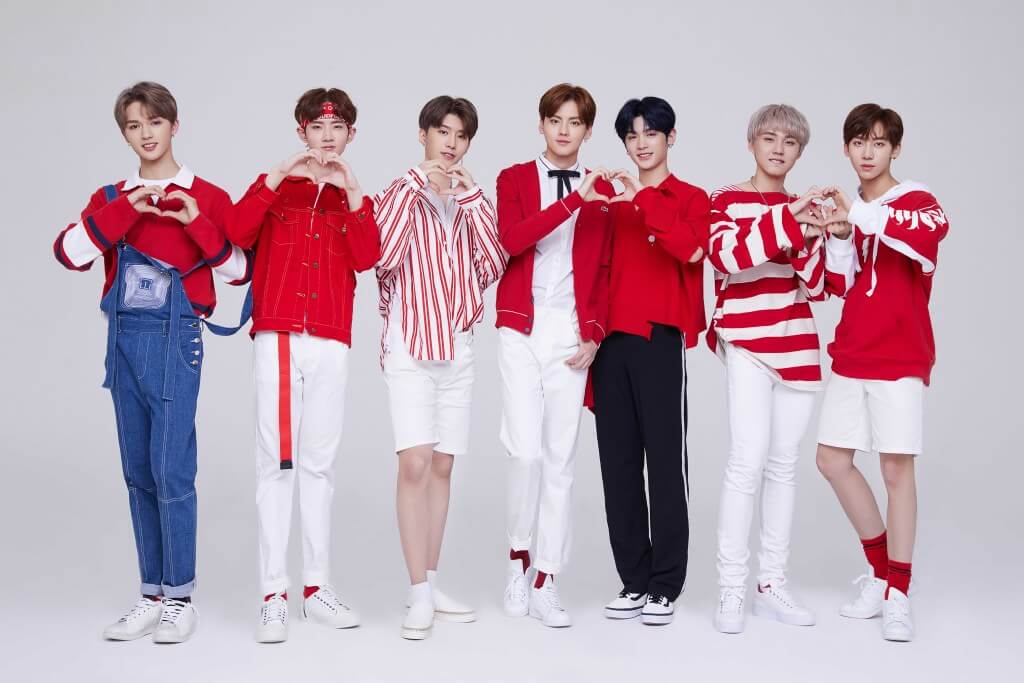In today's rapidly evolving world, the term "next members age" has become increasingly significant as we delve into the demographics of emerging generations. These individuals represent not only the future of society but also a powerful force shaping industries, cultures, and economies worldwide. By understanding the next members age, businesses and organizations can better align their strategies to meet the needs and expectations of this dynamic group.
As we explore the concept of the next members age, it becomes crucial to examine their unique characteristics, behaviors, and preferences. This generation is marked by its digital nativity, global mindset, and commitment to social responsibility. These traits make them stand out as influential players in the global landscape, driving innovation and progress.
This article aims to provide a comprehensive overview of the next members age, including their demographics, cultural influences, and economic contributions. By understanding these factors, readers will gain valuable insights into how this generation is shaping the world and what opportunities lie ahead for those who engage with them effectively.
Read also:Unveiling The Talented Bobbi Baker A Comprehensive Guide
Table of Contents
- Demographics of the Next Members Age
- Cultural Influences Shaping the Next Members Age
- Economic Impact of the Next Members Age
- Why Are Next Members Age Digital Natives?
- Core Values and Priorities of Next Members Age
- Challenges Faced by Next Members Age
- Opportunities for Engaging Next Members Age
- The Role of Education in Shaping Next Members Age
- Technology's Role in Defining Next Members Age
- The Future of Next Members Age
Demographics of the Next Members Age
The next members age primarily refer to individuals born between the late 1990s and early 2010s, often categorized as Generation Z or the post-Millennial generation. According to the U.S. Census Bureau, this demographic constitutes approximately 25% of the global population, making it one of the largest generational cohorts in history.
These individuals are characterized by their diversity, with a significant portion being multiracial or multicultural. They are also more likely to reside in urban areas, where access to technology and global connectivity is abundant. This demographic shift highlights the importance of understanding the next members age in shaping future societal trends.
Age Distribution
As of 2023, the next members age range from early teens to late twenties. This age group is at a critical stage of life, transitioning from adolescence to adulthood. Their experiences during this period will significantly influence their worldview and future decisions.
Cultural Influences Shaping the Next Members Age
Culture plays a pivotal role in shaping the identity and values of the next members age. Exposure to diverse perspectives through media, travel, and technology has broadened their understanding of the world. This exposure has led to a more inclusive and accepting mindset, with a strong emphasis on equality and social justice.
- Digital Media: Platforms like TikTok, Instagram, and YouTube have become primary sources of information and entertainment for this generation.
- Global Connectivity: The ability to connect with peers from different parts of the world has fostered a sense of global citizenship.
- Pop Culture: Music, movies, and influencers have a significant impact on the preferences and lifestyle choices of the next members age.
Economic Impact of the Next Members Age
The economic contributions of the next members age cannot be underestimated. As consumers, they wield considerable purchasing power, with a focus on sustainable and ethical products. Businesses that align with their values stand to benefit from their loyalty and advocacy.
Consumer Behavior
Next members age are known for their preference for experiential consumption over material goods. They prioritize experiences such as travel, dining, and entertainment over owning physical products. Additionally, they are more likely to support brands that demonstrate transparency and social responsibility.
Read also:How Old Is Katherine From Too Hot To Handle A Comprehensive Guide
Why Are Next Members Age Digital Natives?
Growing up in an era dominated by technology, the next members age are true digital natives. They have never known a world without smartphones, the internet, or social media. This digital fluency has shaped their communication styles, learning processes, and career aspirations.
According to a study by Pew Research Center, 95% of next members age own a smartphone, and 45% are online almost constantly. This constant connectivity has enabled them to access information and opportunities at an unprecedented pace.
Core Values and Priorities of Next Members Age
The values and priorities of the next members age reflect their commitment to creating a better world. Key areas of focus include environmental sustainability, social equality, and mental health awareness. These priorities influence their decisions in education, career, and personal life.
Environmental Sustainability
Next members age are passionate about addressing climate change and promoting sustainable practices. They actively support initiatives aimed at reducing carbon footprints and preserving natural resources. This commitment is evident in their choices of products, services, and employers.
Challenges Faced by Next Members Age
Despite their many strengths, the next members age face several challenges that could impact their future. These include economic uncertainty, mental health issues, and the pressure to succeed in a highly competitive world.
- Economic Uncertainty: Rising costs of living and student debt burden many individuals in this demographic.
- Mental Health: The prevalence of anxiety and depression among next members age is higher than previous generations.
- Workplace Pressure: The demand for constant innovation and adaptability can be overwhelming for young professionals.
Opportunities for Engaging Next Members Age
Engaging the next members age offers numerous opportunities for businesses, educators, and policymakers. By understanding their needs and preferences, stakeholders can develop strategies that resonate with this influential group.
Innovative Marketing Strategies
Marketing efforts targeting the next members age should focus on authenticity and relevance. Using influencer partnerships, user-generated content, and interactive campaigns can help build trust and engagement. Additionally, leveraging social media platforms can enhance visibility and reach.
The Role of Education in Shaping Next Members Age
Education plays a critical role in preparing the next members age for the challenges and opportunities ahead. Emphasis on skills such as critical thinking, problem-solving, and digital literacy is essential for their success in the modern workforce.
Moreover, educational institutions are increasingly incorporating topics like sustainability, global citizenship, and emotional intelligence into their curricula. These additions aim to equip students with the knowledge and tools needed to thrive in an interconnected world.
Technology's Role in Defining Next Members Age
Technology is at the core of defining the next members age. From artificial intelligence to virtual reality, advancements in technology continue to shape their experiences and interactions. This generation's adaptability to new technologies positions them as pioneers in driving innovation across various sectors.
Impact on Career Choices
Next members age are drawn to careers that leverage technology, such as software development, data science, and digital marketing. Their proficiency in using digital tools gives them a competitive edge in the job market. Furthermore, remote work and flexible schedules appeal to this generation, allowing them to balance work and personal life effectively.
The Future of Next Members Age
Looking ahead, the next members age are poised to become the leaders of tomorrow. Their unique blend of technological expertise, cultural awareness, and social consciousness positions them to address some of the world's most pressing issues. By fostering an environment that supports their growth and development, society can harness their potential for the greater good.
Call to Action
As we conclude this exploration of the next members age, it is essential to recognize the significance of their contributions to society. We invite readers to share their thoughts and experiences in the comments section below. Additionally, consider exploring other articles on our platform to gain further insights into the evolving landscape of generational dynamics.
Together, we can create a world that embraces the values and aspirations of the next members age, ensuring a brighter future for all.


